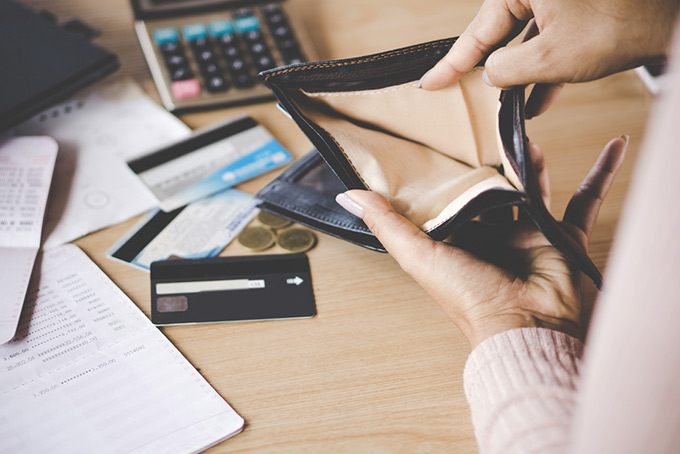Do you toss and turn at night worrying about your debt? If so, you’re not alone!
From student loans to high credit card balances, carrying too much debt is common in America, which runs on credit. According to a recent Experian consumer debt study, outstanding consumer debt in this country reached nearly $17 trillion.
While credit is a great convenience, it can also cause many challenges. Lugging too much debt around can cause a lot more than just financial stress – it can actually take a toll on your physical health, leading to joint pain, depression, and heart disease.
Most of us have some amount of debt, but how do you know when it is too much? The following six scenarios are red flags that you are carrying too much debt and that it’s high time to get on track with your finances.
1. You are carrying a balance of over 30% of your available credit on your credit cards.
If you consistently carry a balance 30% or more of your available credit and cannot pay it off, you are shouldering too much debt. When you utilize more than 30%, your credit score begins dropping as your debt climbs.
2. You are only making minimum monthly payments on your credit cards.
Your monthly minimum is the least you can pay each month and not be delinquent – it does NOT equal your total amount due. Banks design minimum monthly payments to keep you paying forever. When you pay the monthly minimum, you are not paying much (if anything) toward the principal of your balance.

3. You use credit cards to pay for everyday items.
Your credit cards are a convenience – maybe you aren’t comfortable carrying cash or don’t like writing checks. But if you are paying for daily necessities like gas and groceries with a credit card because you don’t have the cash, this is a sign that your debt is out of control. Decide what you will purchase with your credit card, and stick with it. Use a specific card for your gas each month; make sure that is all you are using it for – and that you pay off your balance each month.
4. You rely on payday loans or instant loans.
Payday and instant loans are generally last resorts for people who cannot get approval for a credit card or have maxed their cards out. These loans are the worst loans you can take out. These unscrupulous lending companies charge outrageous fees and interest.
5. You regularly make late payments.
Did you know that credit card companies make most of their money from late fees? When you regularly make late payments, you wind up only paying on the late fee. You are not paying towards the principal – this puts you in an even deeper hole than only paying the minimum payment each month.
6. You have no savings.
The ultimate sign of financial health is that you can regularly save. If your monthly budget does not allow for consistent contributions to some savings account, look into a simple budgeting framework like the 50/30/20 rule. This savings strategy allows up to 50% of your income for your needs, 30% of your income for wants, and 20% of your income for either debt repayment or savings.
If you notice any of these warning signs, it is time to do something about it before you find yourself in an even worse situation. You can take many actions to remedy your situation, ranging from cutting back to filing bankruptcy. If you need assistance assessing your debt and coming up with a solution to ease your financial burden and get back on track with a healthy financial life, contact one of our knowledgeable team members at DebtGuru.com.
